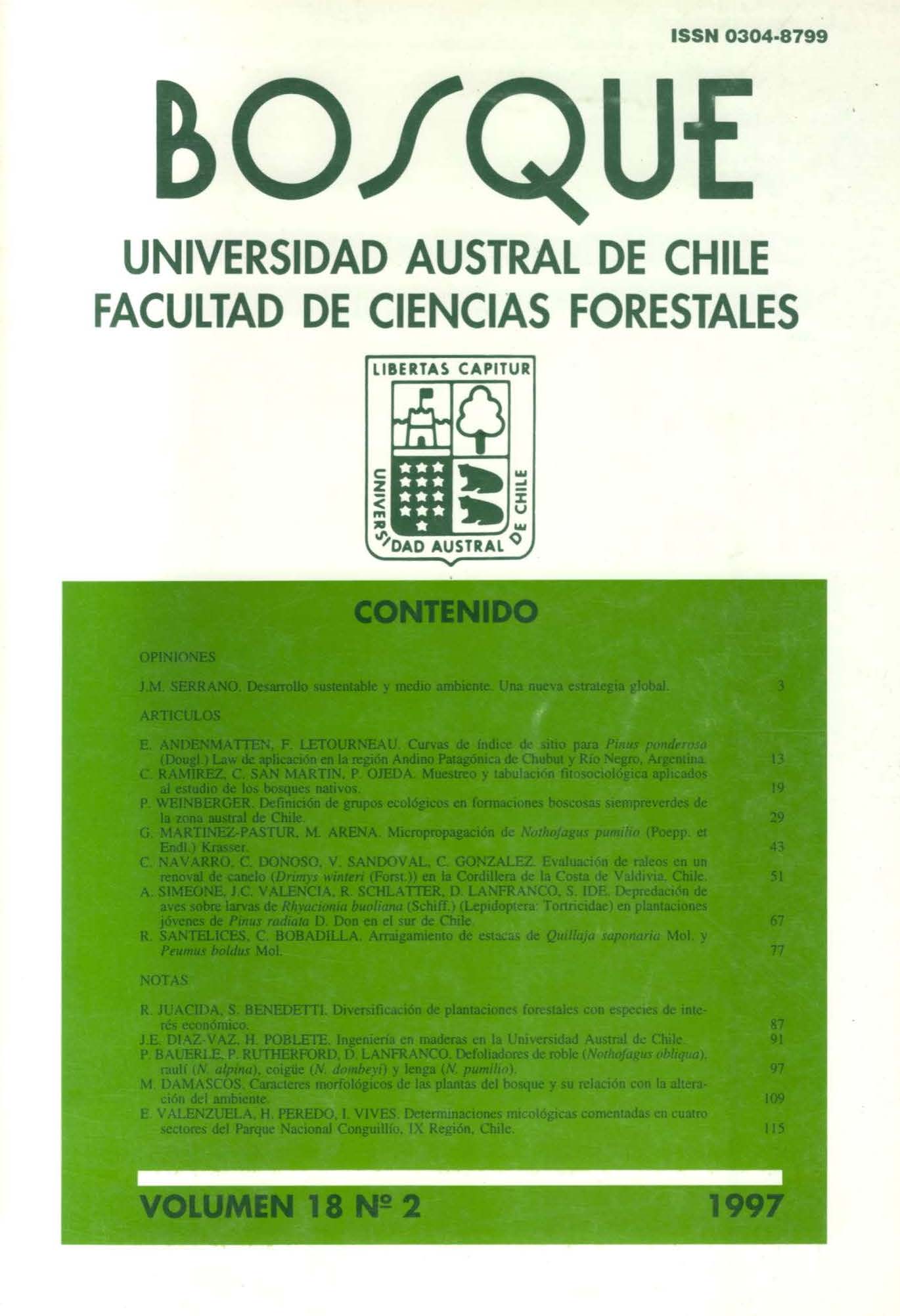Muestreo y tabulación fitosociológica aplicados al estudio de los bosques nativos
Contenido principal del artículo
Resumen
El presente estudio expone la factibilidad de los métodos fitosociológicos en la determinación del área mínima y el número mínimo de relevamientos fitosociológicos necesarios para captar la estructura de un bosque, el valor de importancia de sus especies y la afinidad fitosociológica entre ellas. Como ejemplo se trabajó con el bosque de Roble-Laurel-Lingue (Nothofago-Perseetum linguae) en el centro-sur de Chile. El área mínima corresponde a 110 m2 y a 13 el número mínimo de censos para captar la asociación en toda su integridad. Las especies más importantes en orden decreciente son: Nothofagus obliqua, Chusquea quila, Rubus constrictus, Agrostis capillaris, Luma apiculata, Persea lingue y Laurelia sempervirens. Rubus constrictus y Agrostis capillaris son malezas introducidas y su abundancia refleja el alto grado de intervención antrópica de los rodales estudiados. Luma apiculata resultó la especie más relevante. La importancia de Chusqea quila indica apertura del dosel arbóreo. Las mayores afinidades con Nothofagus obliqua las presentaron la trepadora Lapageria rosea, el helecho Blechnum hastatum y el árbol Luma apiculata. Con Laurelia sempervirens se asociaron positivamente Nothofagus obliqua, Lapageria rosea y la trepadora Cissus striata. Con Persea lingue la asociación fue mucho menor y sólo destaca aquella con Aristotelia chilensis. Por último se discuten la importancia y las limitaciones de los métodos usados y de los valores calculados.

